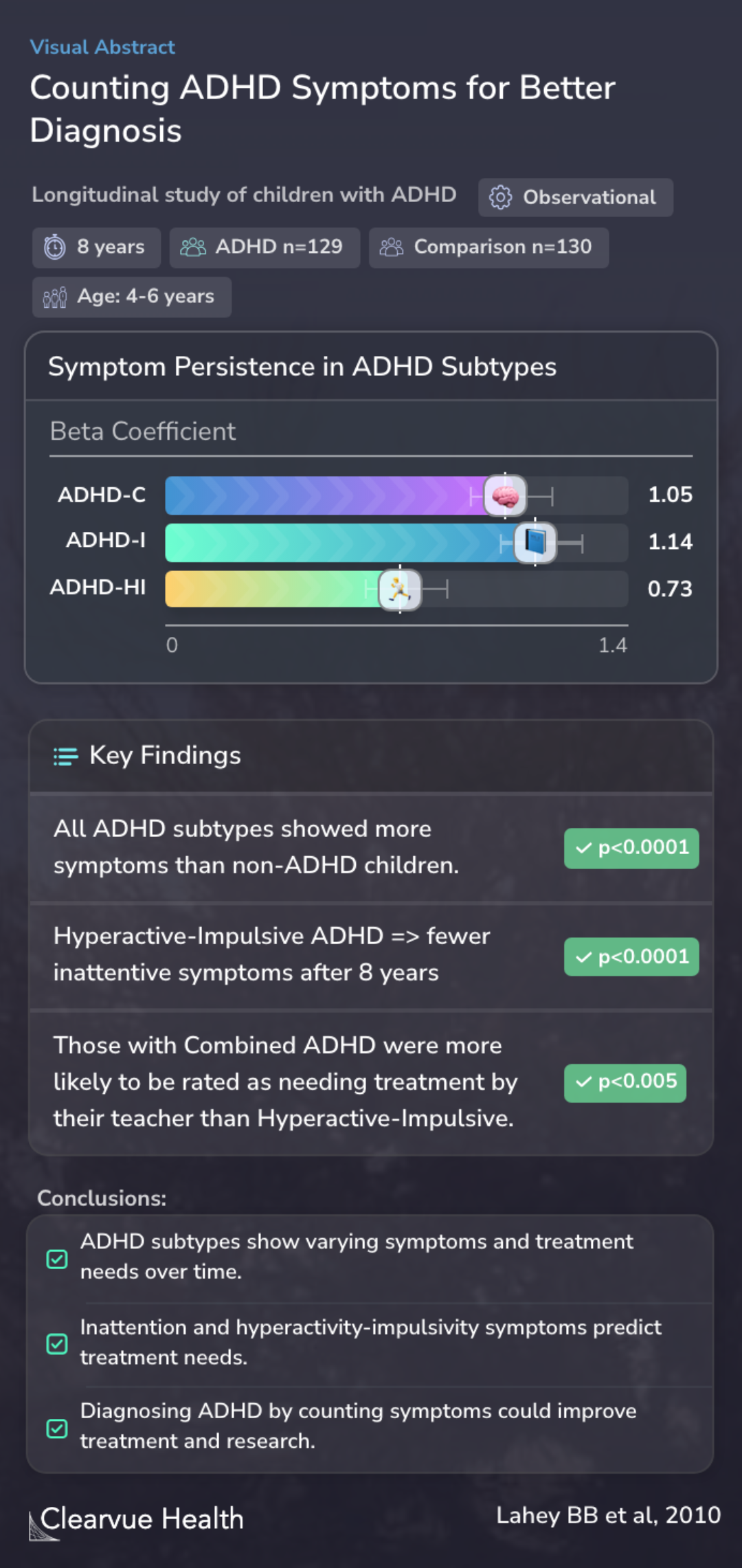Predictive validity of a continuous alternative to nominal subtypes of attention-deficit/hyperactivity disorder for DSM-V
Counting ADHD Symptoms for Better Diagnosis
Lahey BB, Willcutt EG

Objectives
The study explored ADHD, a condition that affects focus and behavior. ADHD has three types, based on symptoms of inattention (I) and hyperactivity-impulsivity (HI). The researchers wanted to see if these types change over time in children. This is important because understanding these changes can help treat ADHD more effectively.
Three subtypes of attention-deficit/hyperactivity disorder (ADHD) based on numbers of symptoms of inattention (I) and hyperactivity-impulsivity (HI) were defined in the Diagnostic and Statistical Manual of Mental Disorders (4th ed.) to reduce heterogeneity of the disorder, but the subtyp...
Methods
The research involved a detailed study of 129 children with ADHD and 130 without, all aged 4-6 years. Over eight years, the study observed how ADHD symptoms changed, providing insights into the condition's development.
A continuous alternative to nominal subtyping is evaluated in a longitudinal study of 129 four- to six-year-old children with ADHD and 130 comparison children.
Results
Initially, the children displayed various symptoms of ADHD, such as difficulty in paying attention (inattention) and being overly active (hyperactivity-impulsivity). However, as they were observed over eight years, the intensity and nature of these symptoms varied. Some children showed decreased specific symptoms, while others struggled with the same challenges. This variability in symptom persistence is key to understanding that ADHD is not a one-size-fits-all condition but rather a complex disorder with evolving characteristics.
The research also showed that these symptoms significantly impacted the children's lives. For example, the need for treatment, as judged by teachers, and their performance in reading and mathematics were influenced by the type and severity of their ADHD symptoms. This finding is crucial as it underscores the long-term effects of ADHD on a child's daily life and academic performance.
Children who met criteria for all subtypes in Year 1 continued to exhibit greater functional impairment than comparison children during Years 2 to 9. Among children with ADHD in Year 1, I and HI symptoms differentially predicted teacher-rated need for treatment and reading and mathematic...
Conclusions
Consistent with other studies, these findings suggest that the use of diagnostic modifiers specifying the numbers of I and HI symptoms could reduce heterogeneity and facilitate clinical intervention, prognosis, and research.
Key Takeaways
Context
This study adds to the broader research on ADHD. It highlights the importance of understanding how ADHD symptoms change over time. Other research shows that while ADHD symptoms can improve with age, attention problems often persist. This study's focus on symptom change over time fits well within this larger context, providing a deeper understanding of the nature of ADHD.